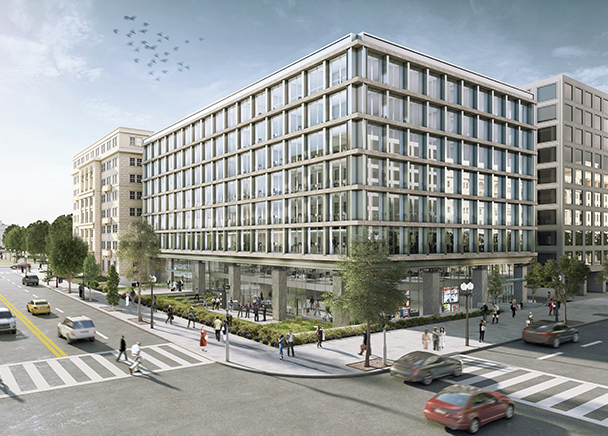A History of the Motion Picture Association Building from 1790-2019
The site of the Motion Picture Association building at the southwest corner of 16th and Eye Streets, NW, two blocks north of the White House, has played a prominent role in the political and social life of Washington, DC since the city’s earliest years. President Theodore Roosevelt would drop by the home of wealthy industrialist Lucius Tuckerman, who built his home on that spot in the late 19th Century.
Since opening its headquarters to the address in the 1940’s, the MPA has hosted luminaries from the worlds of entertainment and politics, including presidents and first ladies, members of Congress, senior administration officials, diplomats, Supreme Court justices, local school children, as well as Hollywood stars, directors, and senior executives.
1790s to 1880s:
- The MPA headquarters is situated on an historic block located within the bounds of Pierre L’Enfant’s 1790 plans for the District of Columbia.
- The Tuckerman House and subsequent MPA buildings were constructed on land that was originally part of the gardens of the Corcoran Mansion, which was owned by prominent Washingtonian and banker William Wilson Corcoran.
- Corcoran bought a more modest home from a financially-strapped Secretary of State Daniel Webster in 1848 at H Street and Connecticut and turned into an opulent mansion.
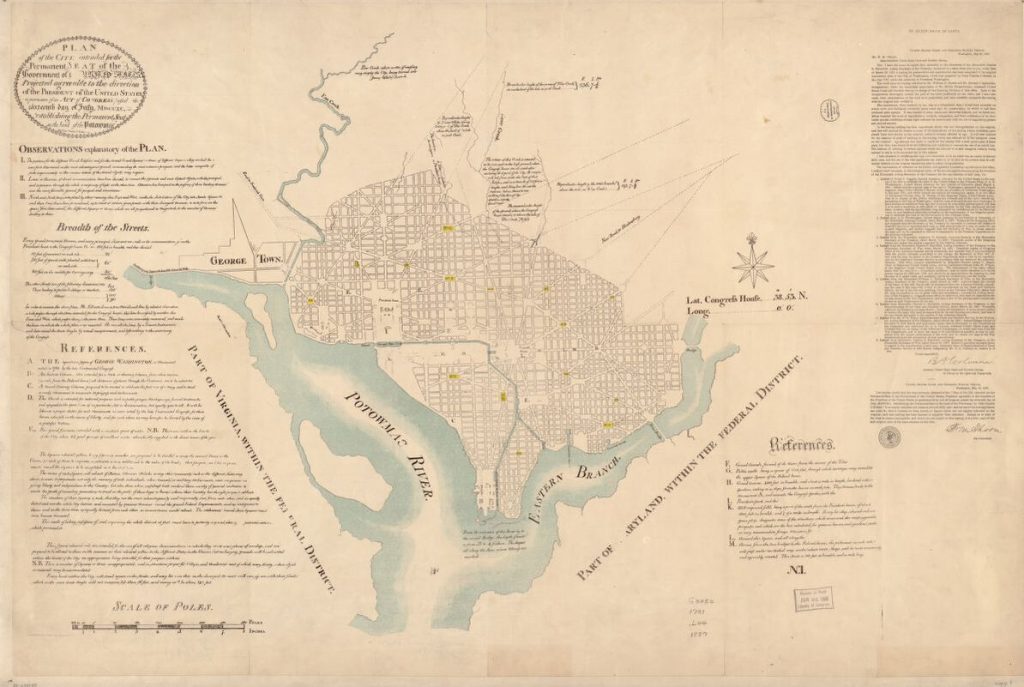
1880s to 1900s:
- Around 1885, New York iron manufacturer Lucius Tuckerman bought a portion of the Corcoran House gardens and built a winter home at Sixteenth and Eye Streets – which would later become the home of the MPA. At the time, there were few houses in the White House-adjacent Lafayette Park neighborhood besides the Corcoran House – which would be razed in 1922 (the same year the Motion Picture Producers and Distributors of America, the predecessor to the MPA, was founded) and replaced with the U.S. Chamber of Commerce building – and homes belonging to John Hay and Henry Adams.
- Tuckerman, a co-founder of the Metropolitan Museum of Art, commissioned prominent architects Hornblower and Marshall to build the red brick and brownstone home. The firm also designed the Smithsonian’s Museum of Natural History and the building that now houses the Phillips Collection.
- Visitors to the Tuckerman House included White House neighbor President Theodore Roosevelt who would reportedly stop by on walks.
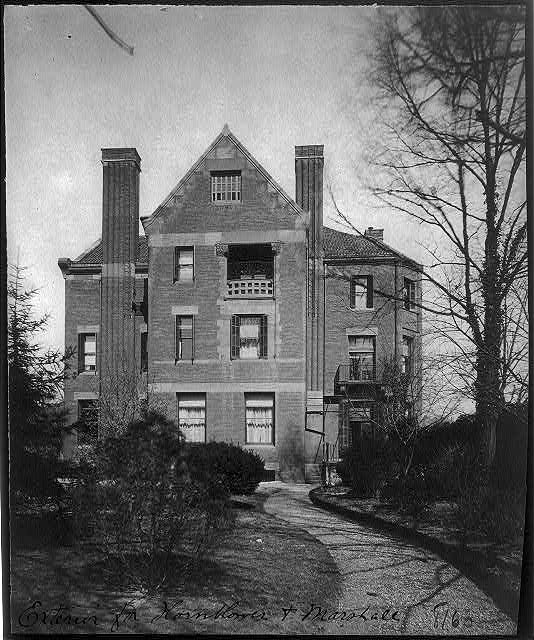
1900s to 1940s:
- Around 1906, Pittsburgh businessman and one-term Congressman Henry Kirke Porter bought Tuckerman House for $300,000. At the time, the Washington Post reported that it was “the largest price which has ever been paid for a piece of residential property in the District.” Porter died in the home in 1921.
- In 1938, Henry Kirke Porter’s stepdaughter donated the house to the Smithsonian and Library of Congress. Funds from the rental or eventual sale of the property were to be split between the institutions.
- During World War II, the building was requisitioned by the Defense Housing Coordination Committee by the request of the Executive Office of the President for use as an “educational institution.”
1945 to 1967:
- Around 1945, the Smithsonian and Library of Congress sold the Tuckerman House to the Motion Picture Association. The MPA took advantage of the key location near Lafayette Square, using it not only for administrative purposes, but also for screenings and social events.
Courtesy of the Library of Congress.
- In November 1949, the MPA unveiled “The Academia,” a 71-seat theater built onto the existing Tuckerman mansion. President and Mrs. Truman attended the theater’s grand opening, which featured a screening of “Samson & Delilah.” The small theater was sometimes encountered technical difficulties. In fact, at the grand opening, director Cecil B. De Mille ended up taking control of the sound dial himself.
- In 1961, MPA head Eric Johnston held a 375-person party at the Tuckerman House before the JFK inauguration balls.
- In June 1967, “In the Heat of the Night,” starring Sidney Poitier was the last film screened before the building was torn down. Attorney General Ramsey Clark and his wife were guests of honor.
- The MPA decided to replace the Tuckerman House with a larger, more modern eight-story building. Jack Valenti, the longtime president of the association, explained that the current building could not be properly heated and cooled, noting that he had to turn the air conditioner off to make phone calls.
- The MPA kept some pieces of the house and decor for the new building, like a French chandelier, and gave some items to the Smithsonian Institution. Other architectural pieces were sold locally, including paneling that ended up in the The Hawk ‘N Dove bar. Former Vice President Hubert Humphrey was rumored to get a fireplace grate, but the MPA disputed that claim at the time.
Credit: Stewart Bros., Inc. Photographers
1969 to 2017:
- The new building continued to host what the New York Times called “one of the most exclusive invitations in Washington…a showing of a new hit film at Mr. Valenti’s bijou of a screening salon.”
- Lady Bird Johnson, former First Lady, attended one of the first events in the new building in 1969 with her daughter and son-in-law, a preview screening of “The Secret of Santa Vittorio.” Future president George H.W. Bush and his wife also attended.
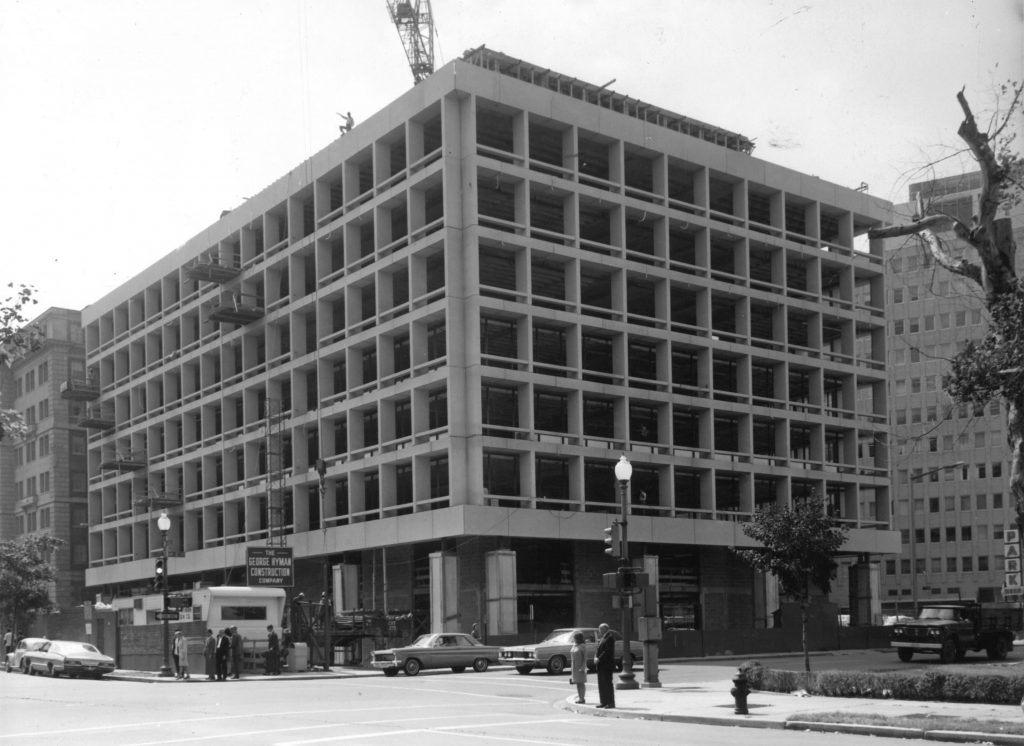
- In 1975, President Ford reportedly became the first president to visit the new building. He attended a screening of the film “The Wind and the Lion” at the last minute, causing a Secret Service scramble after star Candice Bergen invited the chief White House photographer and Ford decided to attend as well. Another time, he viewed “Fiddler on the Roof” at the MPA theater, according to presidential correspondence.
- In 1978, Supreme Court justices reportedly attended a screening of “The Goodbye Girl” in honor of former American Bar Association President Bernard Segal.
- Other notable events included a 1970 screening of a film about the first woman U.S. ambassador, a 1977 screening of the film “The Late Show” attended by Vice President Mondale, and Jefferson Awards ceremonies co-chaired by Jackie Onassis – including one honoring Alan Greenspan who attended with then-girlfriend Barbara Walters in 1976. In 1981, Elizabeth Taylor, then married to Senator John Warner, attended a screening of her film “The Mirror Crack’d,” along with other Senate and Cabinet wives.
- In 1981, the Valenti’s hosted a reception in honor of student filmmakers, which was attended by multiple members of Congress including Al Gore.
- In November 1986, then-Vice President George H.W. Bush saw “Top Gun” at the MPA theater. In 1989, the MPA planned a screening of a children’s movie to entertain the Bush grandchildren and Quayle children during inauguration festivities.
- In December 1987, Oliver Stone screened “Wall Street” at the MPA; all five members of the SEC were scheduled to attend, along with members of Congress.
- In 1999, the MPA hosted a screening of the documentary “FDR” to raise money for a new addition to the Franklin Delano Roosevelt Memorial showing the former president in a wheelchair. Attendees included former Senator Bob Dole, Senator Tom Harkin, cabinet members and four Roosevelt grandchildren.
- In May 1999, Jordan’s King Abdullah screened “Star Wars: Episode I: The Phantom Menace” at the MPA.
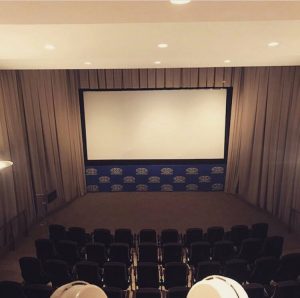
- In February 2003, Senator Hillary Clinton and House Majority Leader Tom Delay co-hosted a screening of “Antwone Fisher” to promote foster care. The event was conceived of by The Casey Family Programs, “which advocates for foster children.” The following year, she attended a screening of “Osama” and spoke to a crowd after the screening.
- From 2005-2006, Vice President Dick Cheney reportedly attended a viewing of United 93 at the MPA.
- On April 9, 2012, the MPA hosted a screening of “The Lady.” Following the screening, there was a panel discussion with then-Secretary of State Hillary Rodham Clinton, director Luc Besson, and actress Michelle Yeoh.
- On September 12, 2012, the MPA hosted a screening of “End of Watch.” The event included an educational presentation focused on law enforcement’s role in protecting intellectual property. There was also a panel discussion with actor Michael Peña and writer, director, and producer, David Ayer.
- From 2013-2014, the MPA hosted a series of events with celebrities featuring members of Congress including: singer Don McLean attended a documentary screening with Sen. Collins and former Senator and Secretary of State Bill Cohen; Robert Redford attended an event at the MPA to discuss his film career; Geena Davis participated in a panel moderated by Rep. Rosa DeLauro, Julia-Louis Dreyfus attended an HBO/MPA reception screening Season 2 Episode 1 & 2 of VEEP, Jeremy Renner attended a screening of “Kill the Messenger,” and Richard Linklater participated in a Q&A following the screening of “Boyhood.”
- In May 2013, the MPA held a screening of the documentary “Mighty Times: The Children’s March” about young civil rights advocates, which was co-produced by The Southern Poverty Law Center.
- On June 25, 2013, Ryan Coogler participated in a Q&A and attended a screening of his directorial debut film “Fruitvale Station.” Coogler would later go on to direct “Creed” and “Black Panther.”
- In 2014, the George Bush Presidential Library Foundation and the MPA hosted a screening of the George HW Bush documentary “41 on 41,” which was attended by Bush speechwriter Mary Kate Cary, Sen. Portman, John Sununu, and reporters.
- On October 24, 2016, the MPA held a screening of the Academy Award-winning film “Moonlight.” The event featured a Q&A with writer and director, Barry Jenkins, as well as actors Naomie Harris and Trevante Rhodes.
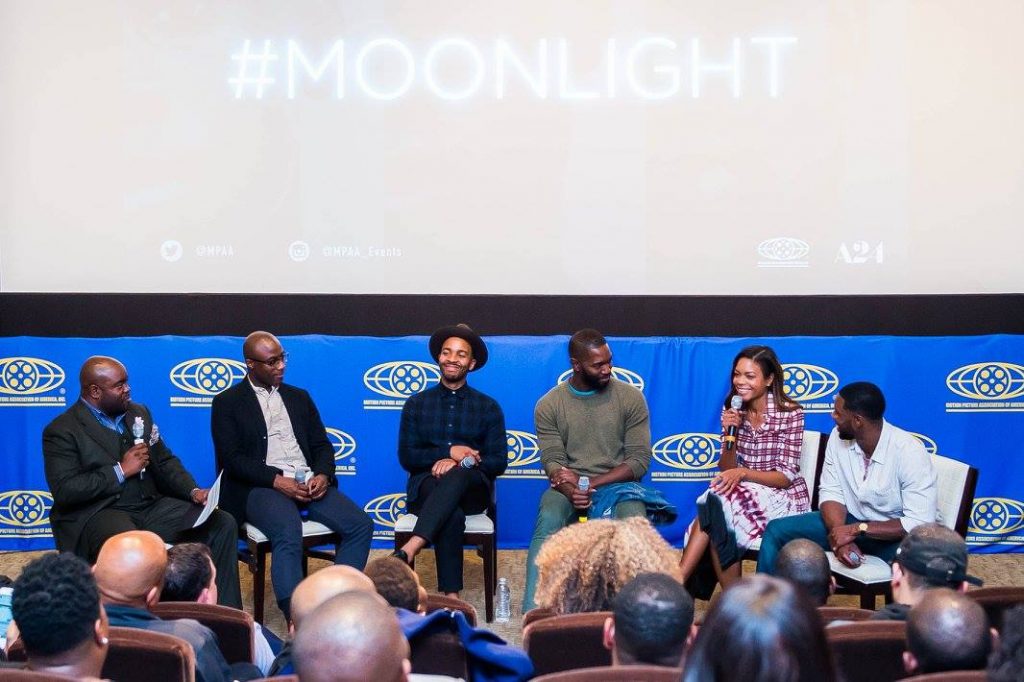
- On July 11, 2017, the MPA and Trammell Crow announced plans to redevelop the building. The transformation of the mid-century modern original building will reflect the creativity and innovation of the film, television, and streaming industry.
- On July 21, 2017, the MPA held a screening of “Dunkirk,” the last event before closing the building for renovations. Attendees included Mary Margaret Valenti and Senators Patrick Leahy and Mark Warner.
2019
- The Motion Picture Association officially returned home to its renovated global headquarters in late August.
